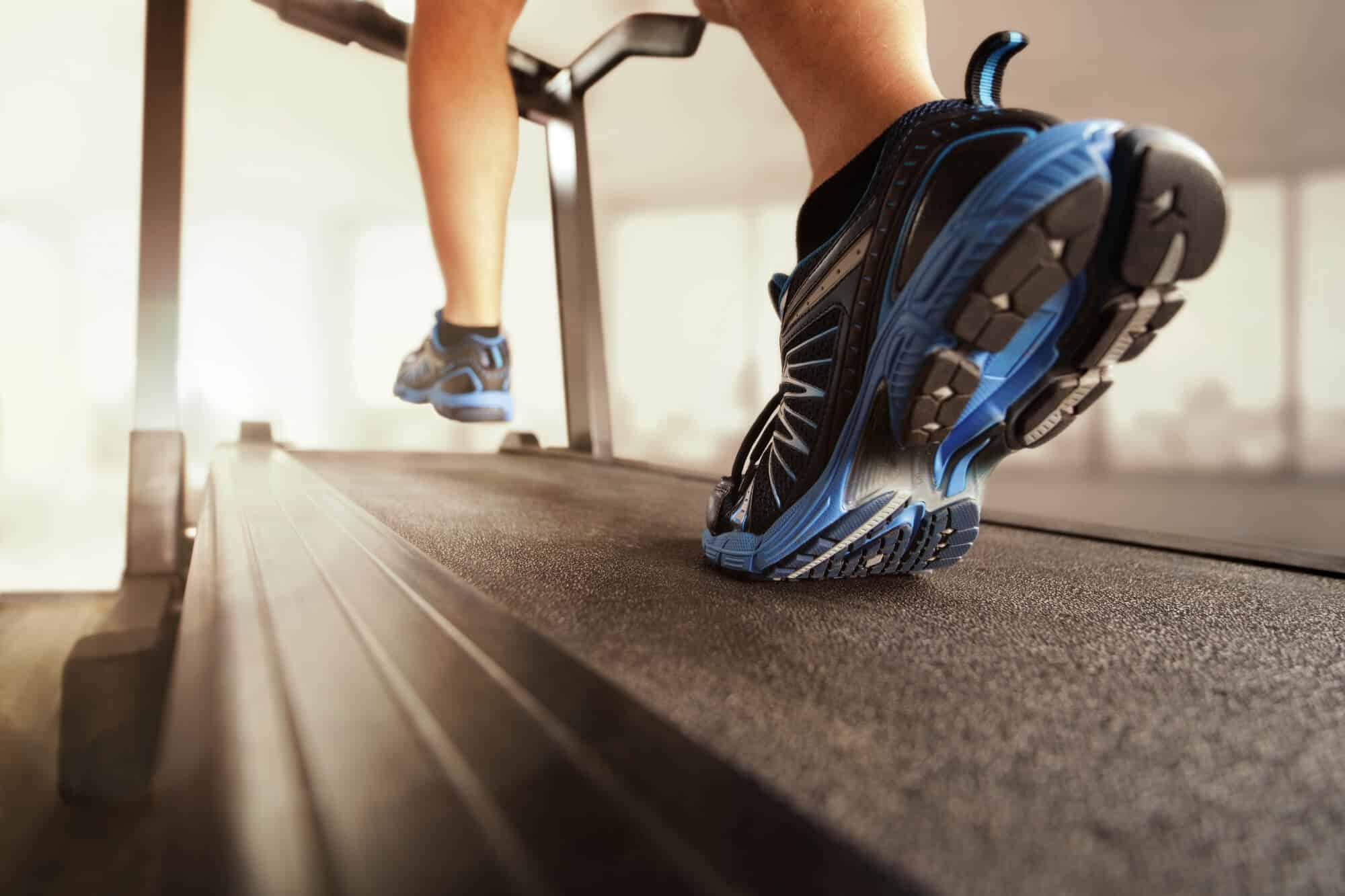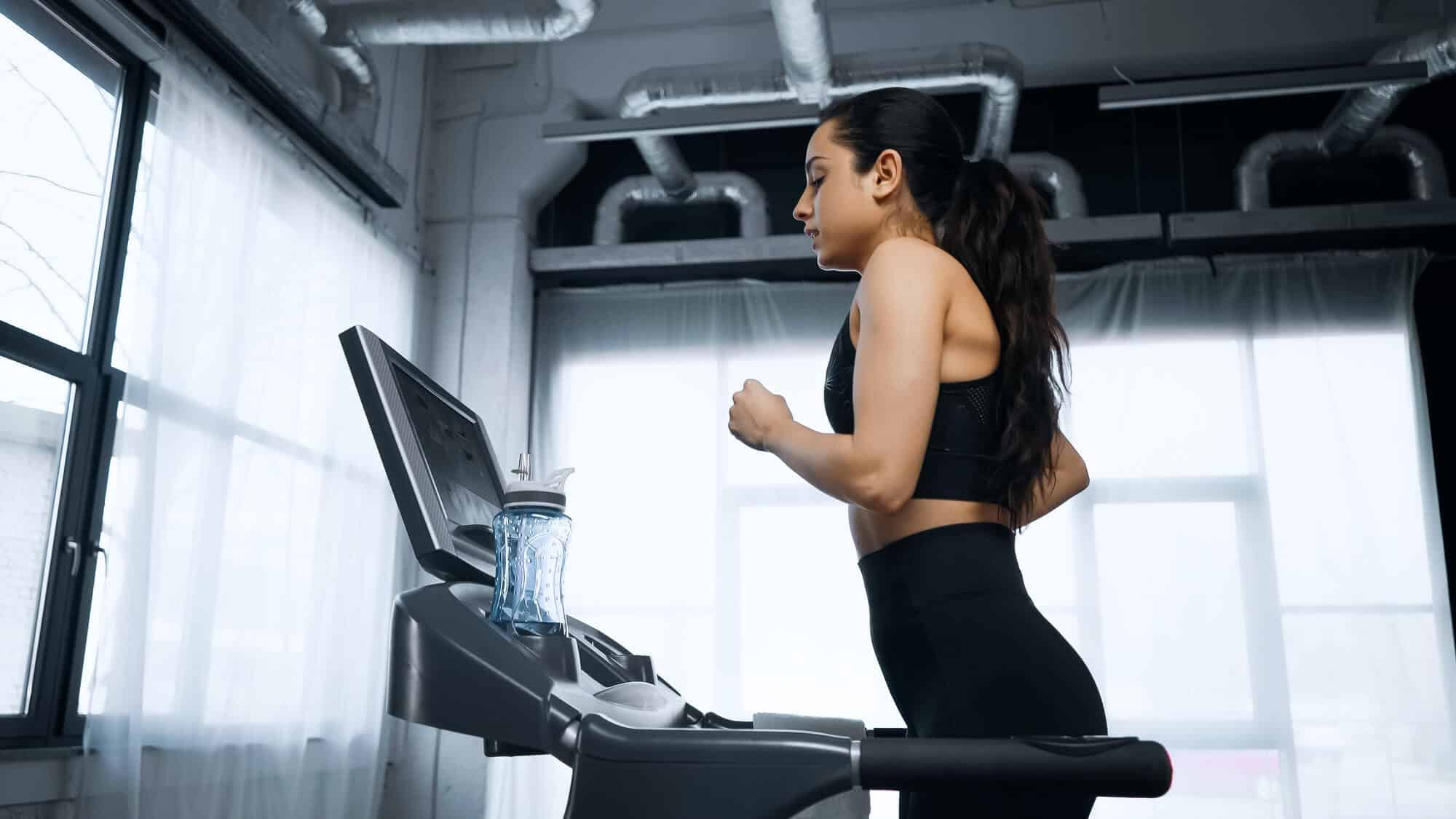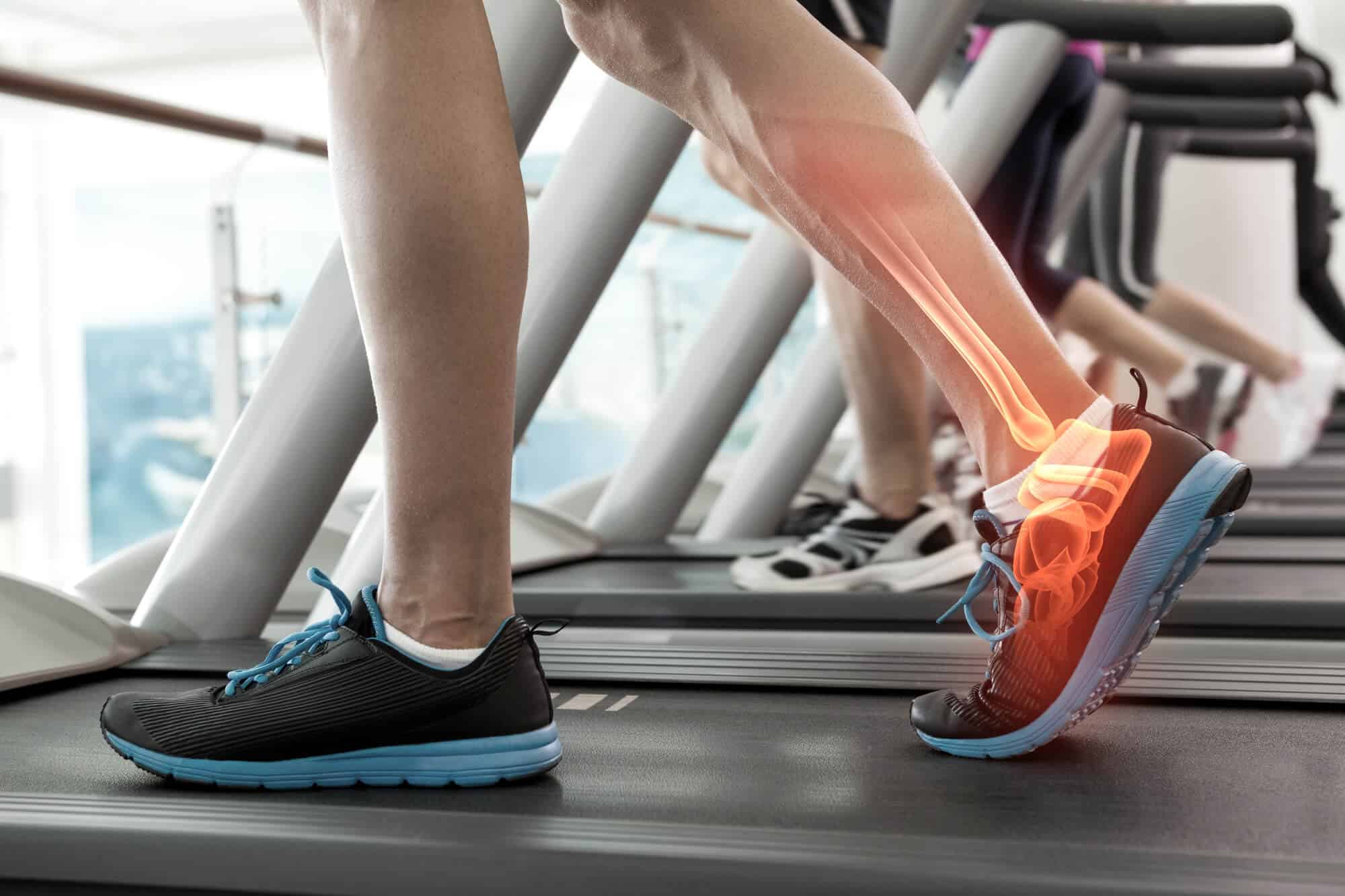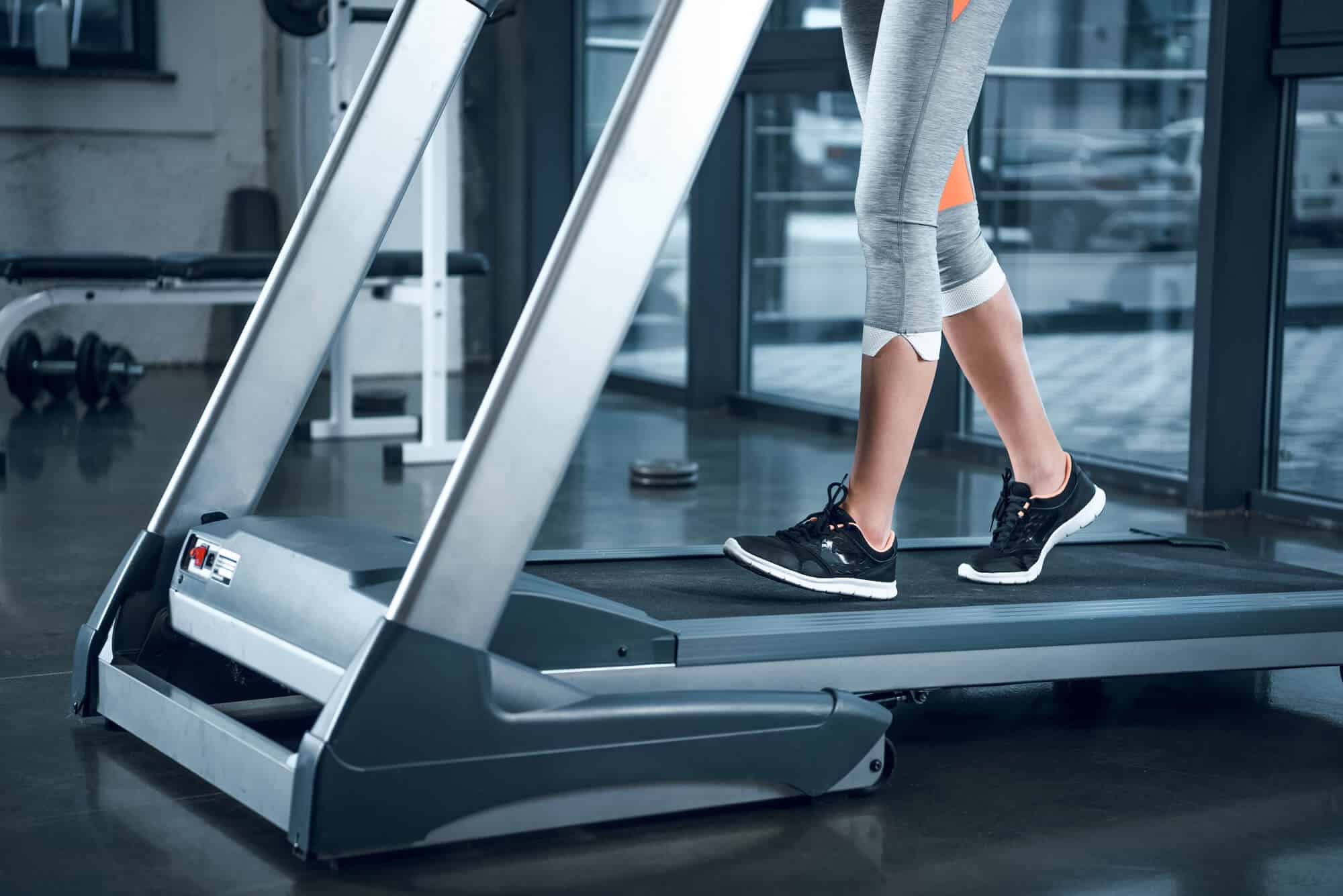Treadmill training comes with a lot of advantages. Aside from being able to control your pace, it’s much more forgiving on the joints.
Plus, you don’t have to worry about weather constraints; whether day or night, shine or rain, you can hop on the machine and start running.
But this begs the question: how many calories do you burn running a mile on a treadmill? Is it just the same as running outdoors?
This article answers that and more, including the factors that affect your calorie burn count when running on a treadmill!
How Many Calories Do You Burn Running a Mile on a Treadmill?
The number of calories burned when running a treadmill depends on many factors, including weight, exercise intensity, efficiency, age, and sex among others.
If you’re of healthy weight, expect to burn roughly 100 to 125 calories per mile at a stable 15-minute mile pace.
Factors That Affect Calorie Burn Count When Running On a Treadmill
How Many Calories Do You Burn Running a Mile on a Treadmill
Most modern treadmills have a “calories burned” counter, which estimates the calories you’ve burned depending on the settings you’ve selected.
However, this counter doesn’t take into consideration your weight, age, sex, and other important factors, like whether or not you were holding onto the handrails while running.
Here are some factors that affect your calorie burn:
Exercise Intensity
The faster and more intense the workout, the greater the calories you’ll burn.
Intense physical activity elevates a person’s heart rate, resulting in the increased consumption of oxygen.
The added oxygen alters the speed of your blood flow and lowers your blood pressure, which in turn increases your metabolism and caloric burn.
The easiest way to measure the intensity of your exercise is by checking the Rate of Perceived Exertion (RPE) scale.
The RPE measures the intensity of your workout from 1 to 10. 1 is classified under very light activity (i.e., a casual walk in the park), while 10 is filed under max effort activity (i.e., all-out sprint, unable to talk).
It’s important to note that while exercise intensity does increase the number of calories burned by a given period, this doesn’t necessarily mean you have to run fast to burn more calories per mile.
A person who finishes a mile run in 15 minutes burns about the same amount of calories as a person who finishes a mile run in 30 miles due to extended effort.
So, if you’re just starting off and can’t run fast quite yet, running for longer durations is often just as effective—sometimes even more so.
Holding Onto Handrails
Holding onto the handrails while running on the treadmill reduces the number of calories you’ll burn.
This is why fitness experts are strongly against holding onto the handrails of a treadmill; it makes running easier, yes, but it also takes away all the benefits of walking and running.
Aside from fewer calories burned, you’ll also ruin your posture and disrupt your body alignment. It doesn’t build balance, either, which is one of the most important aspects of long-distance runs.
If you can’t use the treadmill without holding onto the handrails, set the machine at a slower speed and gradually increase it throughout the session.

Focus on your posture and run with your body upright instead of leaning.
Loosen the tension of your shoulders, neck, and back while simultaneously tightening your abdominal muscles.
Also, keep your eyes forward. Don’t read or watch a video when on the treadmill.
Incline Settings
According to an article published by the New York Times, running outside burns approximately 5% to 7% more calories than running on treadmills.
This is because of many reasons; outside, there’s greater wind resistance and no assistance from the moving belt. The moving belt propels you forward, making the run far less challenging.
Furthermore, your body won’t be affected by the changing temperatures outside.
On hot days, the body exerts more effort to exercise because it’s forced to pump more blood to the skin to reduce your body temperature.
This, in turn, burns more calories. But if you’re exercising inside an air-conditioned room, your body won’t have to push itself to cool you down.
To compensate for the reduced calorie burn, set the treadmill on a slight incline to mimic the conditions outside.
Running on an incline burns an extra 3 to 5 calories per minute.
It also activates your calf muscles, hamstrings, and glutes—thus building more muscles—and allows you to train for a realistic terrain.
Body Weight
The more you weigh, the more calories you burn per single session.
The science of it is quite simple: heavier people expend more energy and effort when moving their bodies.
This means that heavier individuals burn more calories doing the same activities as lighter individuals, both at rest or when performing physical activities, like running.
For example, a 140-pound person burns 13 calories per minute while running. So if that person runs a 10-minute mile, he’ll burn approximately 130 calories.
On the other hand, a 180-pound person burns up to 17 calories per minute.
If he were to run the same 10-minute mile at the same intensity, he’ll burn 170 calories—roughly 35% more than the lighter individual.
Muscle Mass
According to studies, muscle tissue burns more calories than body fat, even when you’re at rest.
This means that a person with more muscle burns more calories than a person with more fat, even if they weigh exactly the same.
On average, 10 pounds of muscle burn approximately 50 calories in a day spent at rest, while 10 pounds of fat burn only 20 or so calories.
Here’s why: to support the rate at which the muscles are contracting, the body produces more energy by burning more calories.
Additionally, muscle tissues are metabolically more active than fat tissues, and thus burn more calories even while doing “nothing,” i.e., sitting on the couch watching TV or laying in bed.
So if you want to burn more calories at a faster rate, work on your muscles. Add some strength training in addition to your weekly running routine.
Age and Sex
Although not as important as the factors above, your age and sex also contribute to the number of calories burned while running on a treadmill.
Biologically, men are larger than women. They also tend to have less body fat and more muscles than women of the same age and weight.
So, it doesn’t come as a surprise that men burn more calories than women—5 to 10% at rest and more with exercise.
In addition, women need more body fat compared to men to support their health.
According to the American Council on Exercise, women need an average of 21 to 33% body fat as opposed to men, who only need an average of 8 to 20% body fat.
Aside from sex, age matters also.

As a person ages, their daily caloric intake decreases, resulting in a slower metabolism.
This means that the older you are, the fewer calories you’ll burn during rest and exercise.
The body’s metabolism starts to falter at around the age of 30, when it starts to lose a bit of muscle and put in more fat.
How Do You Calculate Calories Burned on a Treadmill?
Now that you’re aware of the major factors that affect the calories burned during an activity, here’s how to manually calculate it:
Calories Burned per Minute = 3.5 (Time × 3.5 × MET × Body Weight (in kilograms)) / 200
Multiply 3.5 with the total number of minutes you’ve spent on the treadmill, the MET (Metabolic Equivalent of Task), and your weight in kilograms. Then, divide the answer by 200.
The MET is the objective ratio of the energy expended per unit of time. In other words, it measures the intensity of an exercise or activity.
Basic MET treadmill figures are as follows:
- Walking on a treadmill: 2.3 MET
- Running on a treadmill without an incline: 7.5 MET
- Running on a treadmill with an incline: 9 MET
Let’s say you’re 130 pounds and you’ve spent roughly 10 minutes running a mile on the treadmill at an incline. The equation will look like this:
3.5 (10 minutes × 9 MET × 58 kilograms (converted from 130 pounds)) / 200 = 137 calories burned
If you don’t want to go through the effort of manually calculating the calories burned yourself, you can easily find calculators online that do it for you.
Just note that the resulting figure is a very broad estimate and is by no means 100% accurate.
The only way you can truly get an accurate number is by visiting a dedicated sports center and measuring everything, from your maximum heart rate to your VO2 max (maximum oxygen uptake).
Most people won’t go to such extremes so the formula above is the next best thing.
How Long Does It Take to Run a Mile on a Treadmill?
The great thing about treadmills is that it gives you a stable running pace throughout the session.
Most treadmills will tell you how fast you’re going depending on the pace you’re going, which is usually measured in miles per hour (mph).
Here’s a rough estimate of how fast it’ll take you to complete a mile on a treadmill:
- 4 mph: 15 minutes per mile
- 5 mph: 12 minutes per mile
- 6 mph: 10 minutes per mile
- 7 mph: 8.30 minutes per mile
- 8 mph: 7.30 minutes per mile
- 9 mph: 6:30 minutes per mile
- 10 mph: 6 minutes per mile
On average, non-competitive runners complete a mile in roughly 9 to 10 minutes.
Elite marathon runners and athletes complete a mile between 4 to 5 minutes.
People new to running might finish a mile in between 12 to 15 minutes.
What Are the Benefits of Running on a Treadmill?
Running outside comes with a ton of benefits. It feels way more engaging than running on a treadmill, plus it’s cheaper overall.
It’s the recommended route for PTs and coaches because it’s way more effective in terms of calories burned.
However, running on a treadmill comes with its own set of advantages.
You Can Control Your Pace
One of the biggest advantages of treadmill training is that it gives you a fully controlled environment to work in.
You can control the pace, interval, incline, and recovery time of your workout. It’s much easier to reduce and increase your place with a belt moving under your feet.
Eventually, the pace you’ve established on a treadmill will translate to outdoor running.
This makes it easier to maintain your pace without having to glance at your fitness tracker or your phone every few minutes.
It’s More Forgiving on the Joints
According to research, running on a treadmill is much easier on the joints than running outside. The treadmill’s belt is softer than most outside surfaces, so your ankles, knees, and back won’t suffer much impact.
Furthermore, the treadmill reduces your stride lengths and increases your stride rates, meaning you’re taking shorter, but quicker steps, which again leads to less impact.

You also don’t have to worry about running downhill when you position the treadmill on an incline, which can be rough on the body and lead to injury if you’re not careful.
You Can Run at Any Hour, Any Day, Regardless of the Weather
Treadmill training is the best solution for when you simply can’t run outdoors, whether it’s because of the weather or because of the area you live in.
It gives you the option to go for a run from the comfort of air-conditioned space.
Moreover, running indoors is much safer than running outside at night or without a running partner, making it a valuable option for teens, women, and people with health issues.
It Allows You to Multitask
When you’re running outside, you can’t do much other than focus on your breathing and the road ahead. It’s not so when running on a treadmill.
When you’re running on a treadmill, you can put on earphones/headphones without worrying about the vehicles coming from behind you, or suspicious people following you.
You can also watch TV while running on the treadmill, or even page through a magazine or a book (so long as you don’t lose your footing!).
It Can Simulate Race Conditions
Modern treadmill machines have built-in race simulations to help runners train for the course. Some even offer simulations of famous races, like Boston Marathon Races.
It can train you for hilly marathons even if you don’t have access to hills, and show you your running results if you were to compete in marathons.
It’s also useful for when you’re trying out new gear you’ll be wearing for race day, like new running shoes or clothing.
It’s Convenient
If you have a treadmill at home, you don’t have to make yourself look presentable for your runs. Simply don your race gear, turn the machine, and start running.
Plus, food or water is just a couple of steps away!
Safety Tips to Follow When Running on a Treadmill
Although running on a treadmill is generally safer than running outside, you still need to exercise these safety tips to prevent untimely injuries:
Keep Your Head Up
In other words, don’t look down or watch your feet while running on a treadmill. If you don’t look forward, you’re more likely to lose your balance and fall.
Let Go of the Handrails
Don’t ever rely on the handrails when running on a treadmill. Handrails are there just for the occasional support.
If you use the handrails for extended periods of time, you can put a strain on your shoulders and elbows, disrupt your body alignment, and ruin your posture.
And as mentioned above, it burns fewer calories overall.
Don’t Go Barefoot
Resist the temptation of going barefoot when running on a treadmill.
Your feet need to be protected from the heat and friction created by the running belt.
Without running shoes on, you’ll increase the risk of scrapes, burns, blisters, and other injuries.
Don’t wear only socks either, as socks make the belt super slippery.
Conclusion
How Many Calories Do You Burn Running a Mile on a Treadmill? On average, expect to burn roughly 100 to 125 calories when running a mile on a treadmill.
This figure varies significantly from person to person, depending on the exercise intensity, body weight, muscle mass, and treadmill setting.
Luckily, you can easily calculate the calories burned using an online calorie burned calculator or the mathematical formula above.

